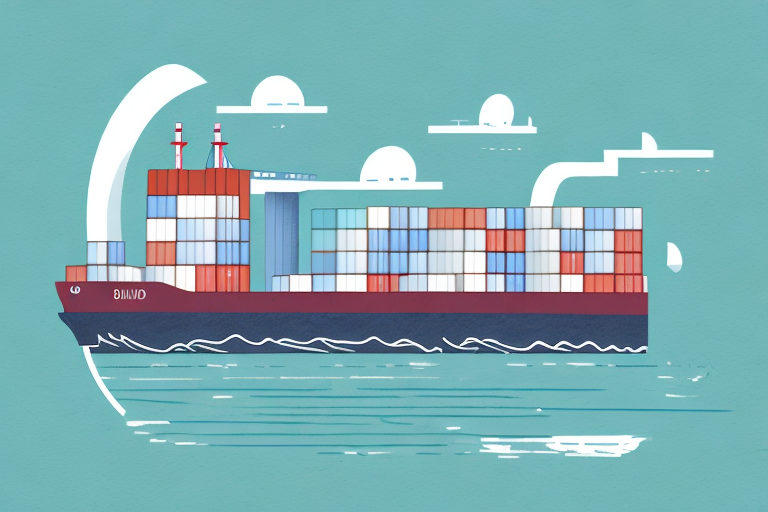Understanding the Landed Cost Formula
In the realm of international trade, comprehending landed cost is essential for running a successful business. But what exactly is landed cost, and why is it so important? This article delves deep into the landed cost formula, exploring its components, calculations, advantages, challenges, and more.
Defining Landed Cost
Simply put, landed cost is the total cost of importing a product from a foreign supplier or manufacturer. It encompasses not only the price of the product but also all associated expenses incurred during transport and delivery. These expenses include customs duties, taxes, insurance, freight charges, handling fees, and any other costs related to moving the product from the foreign country to its final destination.
Accurately calculating landed cost is crucial for businesses that import products, as it helps determine the true cost of goods, inform pricing strategies, and ensure profitability. Additionally, it facilitates the comparison of costs across different suppliers and shipping methods, highlighting areas where expenses can potentially be reduced.
Understanding landed cost is also vital for compliance with international trade regulations. Customs authorities require precise documentation of all import-related costs, and failure to provide this information can lead to delays, fines, or even seizure of goods.
Components of Landed Cost
When calculating the landed cost of a product, it's essential to account for all components that contribute to the final price:
- Product Cost: The price of the product as quoted by the supplier or manufacturer.
- Freight Charges: Costs associated with transporting the product by sea, air, or land.
- Insurance: Expenses for insuring the product during transit.
- Customs Duties and Taxes: Fees charged by governments for importing the product.
- Handling Fees: Charges from intermediaries involved in the import process, such as customs brokers and freight forwarders.
- Other Expenses: Miscellaneous costs including storage fees, demurrage charges, and more.
The landed cost can vary based on the country of origin, destination country, and the method of transportation. For instance, air freight typically incurs higher costs than sea freight, impacting the overall landed cost of products transported by air.
Calculating Landed Cost
Calculating landed cost involves a comprehensive process to ensure all expenses are accounted for. The basic landed cost formula is:
Landed Cost = Product Cost + Freight Charges + Insurance + Customs Duties and Taxes + Handling Fees + Other Expenses
Each component must be calculated individually based on the specifics of the import shipment. For example, customs duties and taxes vary depending on the product category, country of origin, and destination, requiring accurate calculations to avoid unexpected costs or penalties.
According to Trade.gov, businesses that meticulously calculate landed costs can improve their pricing strategies and enhance profitability.
The Importance and Advantages of Landed Cost in Business
Understanding landed cost is vital for businesses engaged in importing goods for several reasons:
Accurate Product Pricing
By incorporating all associated import costs, businesses can set more accurate and profitable prices for their products.
Better Inventory Management
Keen insight into landed costs allows businesses to make informed decisions about ordering quantities and choosing suppliers.
Improved Profitability
Minimizing total import costs enhances overall profitability and competitiveness in the market.
Reduced Risk
Awareness of all import-related expenses helps mitigate risks of unexpected costs, delays, or legal issues.
Factors and Challenges Affecting Landed Cost Calculation
Key Factors
- Product Value: The intrinsic cost of the product significantly impacts landed cost.
- Transportation Method: Air, sea, or land transportation affects freight and insurance costs.
- Country of Origin: Different countries have varying customs duties and taxes.
- Quantity: The volume of products being imported influences freight and handling costs.
- Exchange Rate: Currency fluctuations can alter the cost of products and related expenses.
- Regulations: Diverse import regulations and requirements can affect overall costs.
Common Challenges
- Calculating Customs Duties and Taxes: These fees are complex and vary based on multiple factors.
- Language Barriers: Communicating with international suppliers or intermediaries can be challenging.
- Regulatory Compliance: Navigating various import regulations requires expertise.
- Logistical Issues: Tracking products through multiple stages of transport can be cumbersome.
- Cost of Intermediaries: Engaging customs brokers and freight forwarders adds to import costs.
Strategies to Reduce Landed Costs
Reducing landed costs can enhance profitability and competitiveness. Strategies include:
- Negotiating with Suppliers: Secure lower product costs or freight charges.
- Optimizing Transportation: Select the most cost-effective shipping methods and routes.
- Minimizing Intermediaries: Reduce the number of intermediaries to lower handling fees.
- Streamlining Regulatory Compliance: Ensure all permits, licenses, and documentation are accurate to avoid delays and penalties.
- Automating Processes: Implement technology solutions to manage landed costs efficiently.
Best Practices and Technological Advancements in Managing Landed Costs
Best Practices
- Keep Accurate Records: Detailed documentation of all import-related expenses is crucial for precise calculations.
- Use Technology: Employ software solutions and automation to streamline landed cost calculations and management.
- Negotiate with Suppliers: Engage in negotiations to lower product and freight costs.
- Stay Informed: Keep abreast of changes in import regulations, exchange rates, and other factors affecting landed costs.
Technological Advancements
Technology is revolutionizing how businesses calculate and manage landed costs. Innovations include:
- Automated Tracking Systems: Provide real-time visibility into the import process.
- Cloud-Based Software: Offers scalable solutions for managing landed costs across multiple shipments.
- Blockchain Technology: Enhances transparency and security in the import process.
These advancements enable businesses to manage landed costs more accurately and efficiently, as highlighted by recent studies from McKinsey & Company.
Common Mistakes in Landed Cost Calculation
Businesses often encounter errors when calculating landed costs. Common mistakes include:
- Omitting Components: Failing to include all import-related expenses leads to inaccurate calculations.
- Ignoring Exchange Rate Fluctuations: Currency variations can significantly impact landed costs.
- Incorrect Product Valuation: Mispricing products results in flawed cost assessments.
- Poor Expense Tracking: Inadequate record-keeping hinders accurate landed cost calculations.
- Neglecting Regulatory Compliance: Non-compliance with import regulations can incur penalties and delays.
Industry-Specific Landed Cost Calculations
The calculation of landed cost varies across different industries. Examples include:
- Automotive: Includes costs for freight, handling, customs duties, and taxes for imported automotive parts.
- Fashion: Encompasses product cost, freight, insurance, customs duties, and handling fees for fashion items.
- Electronics: Covers product cost, freight, insurance, customs duties, and handling expenses for electronic goods.
Using Landed Cost for Informed Business Decisions
Understanding landed cost empowers businesses to make data-driven decisions regarding pricing, inventory management, and profitability. By knowing the true cost of importing a product, businesses can optimize their supply chain, negotiate better deals with suppliers, and enhance overall efficiency. For instance, evaluating whether it's more cost-effective to import larger quantities less frequently versus smaller, more frequent shipments can significantly impact profitability.
Landed Cost vs. Other Costing Methods
Landed cost is one of several costing methods used in business, each focusing on different aspects:
- Variable Cost: Costs that vary with production volume, including materials, labor, and overhead.
- Fixed Cost: Constant expenses that do not change with production levels, such as rent, utilities, and salaries.
- Marginal Cost: The cost of producing one additional unit of a product.
While landed cost specifically addresses the total cost of importing products, other costing methods provide broader insights into different areas of business operations.
Conclusion
In conclusion, understanding landed cost is paramount for businesses that import goods from overseas. Accurately calculating and managing the associated costs enables informed decisions about pricing, inventory management, and profitability. Despite the challenges and complexities involved in landed cost calculation, adopting best practices and leveraging technological advancements can help businesses optimize their supply chain and enhance competitiveness.






















